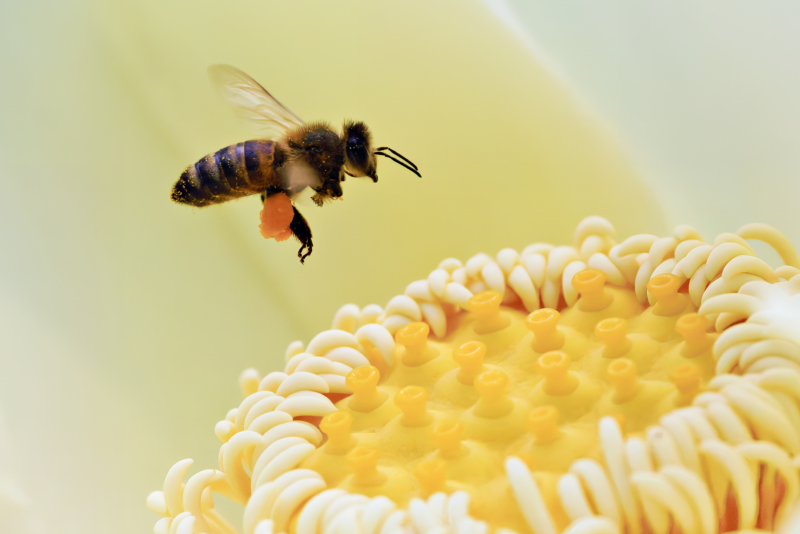Today’s photo captures a bee in mid-flight above an American lotus flower, taken from the Phillip Parks Memorial Fishing Pier in Sequoyah National Wildlife Refuge, Oklahoma. The center of the American lotus flower always catches my eye—it looks so unusual with its spongy, yellow-orange receptacle that resembles a showerhead.

A Floral Attraction
American lotus flowers are a beacon for various insects, especially bees, drawn by the promise of nectar. The bee in my photo appears to be a Western honeybee, a frequent visitor to these flowers. The large, showy blooms of the American lotus are not just beautiful; they are essential sources of nectar and pollen.
A Beneficial Relationship
The connection between the American lotus and bees is a win-win situation. The flowers depend on bees for pollination. Without these hard-working insects, the lotus would struggle to reproduce. In return, bees benefit from the rich nectar and pollen the flowers provide.
The Essential Western Honeybee
Western honeybees are remarkable creatures, playing a crucial role in pollination. They possess a keen sense of smell and excellent vision, enabling them to locate flowers like the American lotus. After finding a flower, they collect nectar and pollen, which they take back to their hive.
The Bigger Picture
Understanding the relationship between bees and flowers like the American lotus highlights the importance of preserving habitats such as the Sequoyah National Wildlife Refuge. These environments support not just the plants and animals that live there but also the intricate interactions that sustain our ecosystems.
Next time you’re out in nature, take a moment to appreciate these beautiful, complex relationships. There’s always something incredible to discover.
Stay tuned for more wildlife wonders from the Sequoyah National Wildlife Refuge in Oklahoma!
